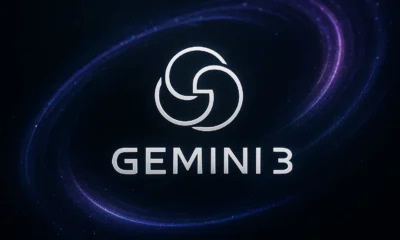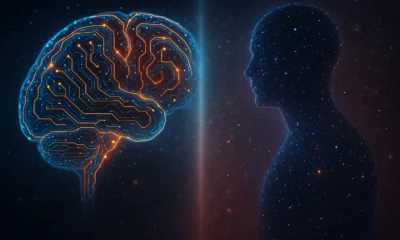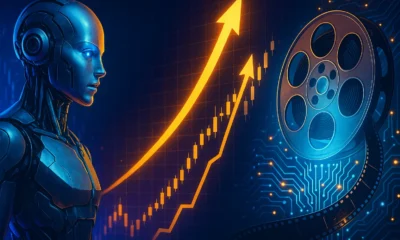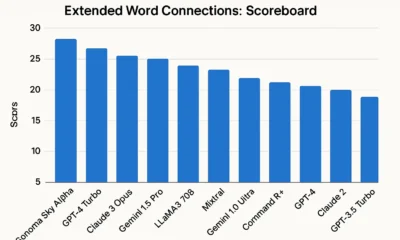AI News & Updates
Latest AI Breakthroughs: Exclusive News You Can’t Miss!
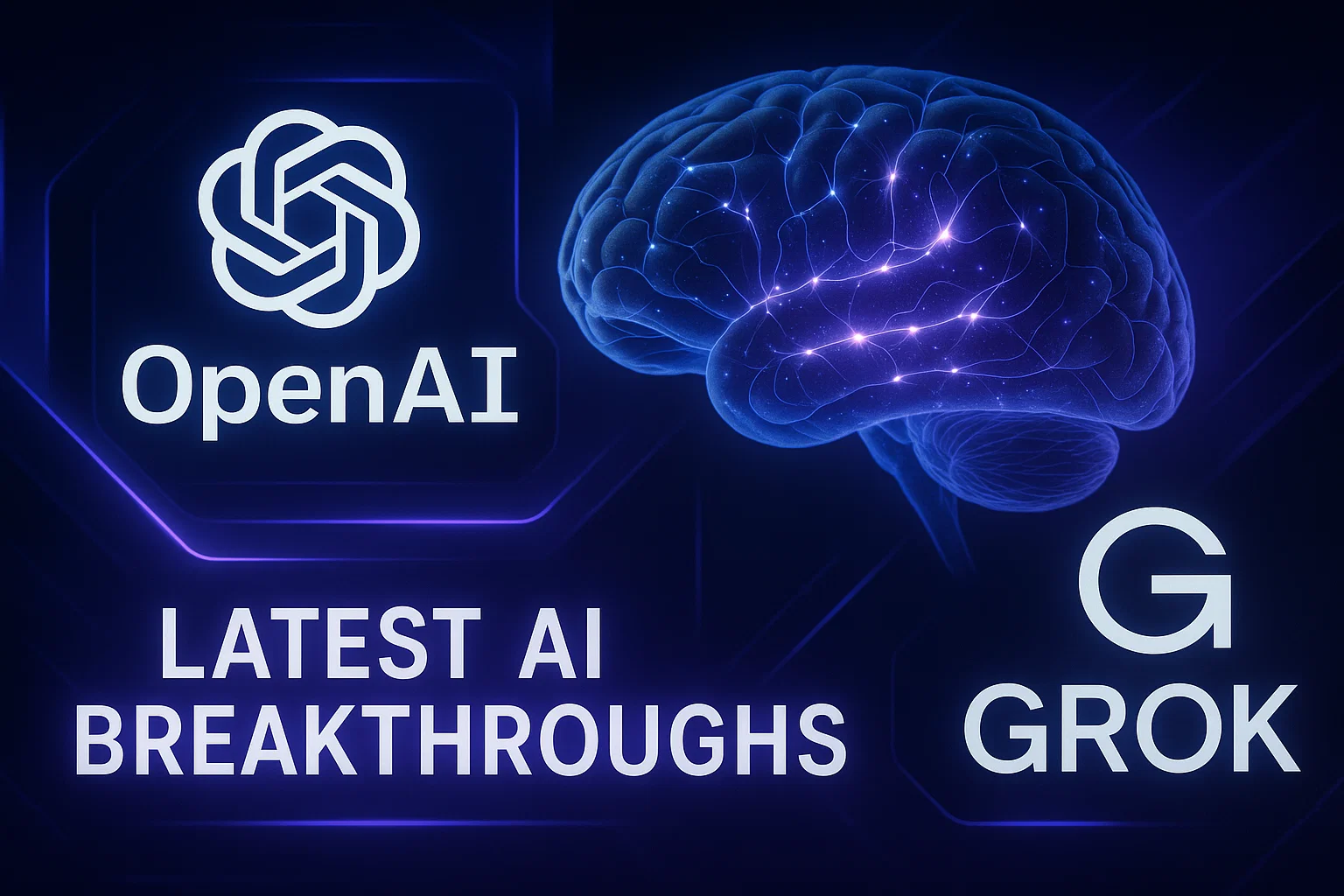
This week was packed with some of the latest AI breakthroughs that are pushing the boundaries of what’s possible. From OpenAI taking a monumental step towards Artificial General Intelligence (AGI) with its new ChatGPT Agent to a stunning trillion-parameter model emerging from China, the pace of innovation is relentless. In this roundup, we’ll dive into these stories, explore new tools that are changing software development, witness AI competing at the highest levels, and even touch upon the controversies shaking up the industry. Let’s get started.
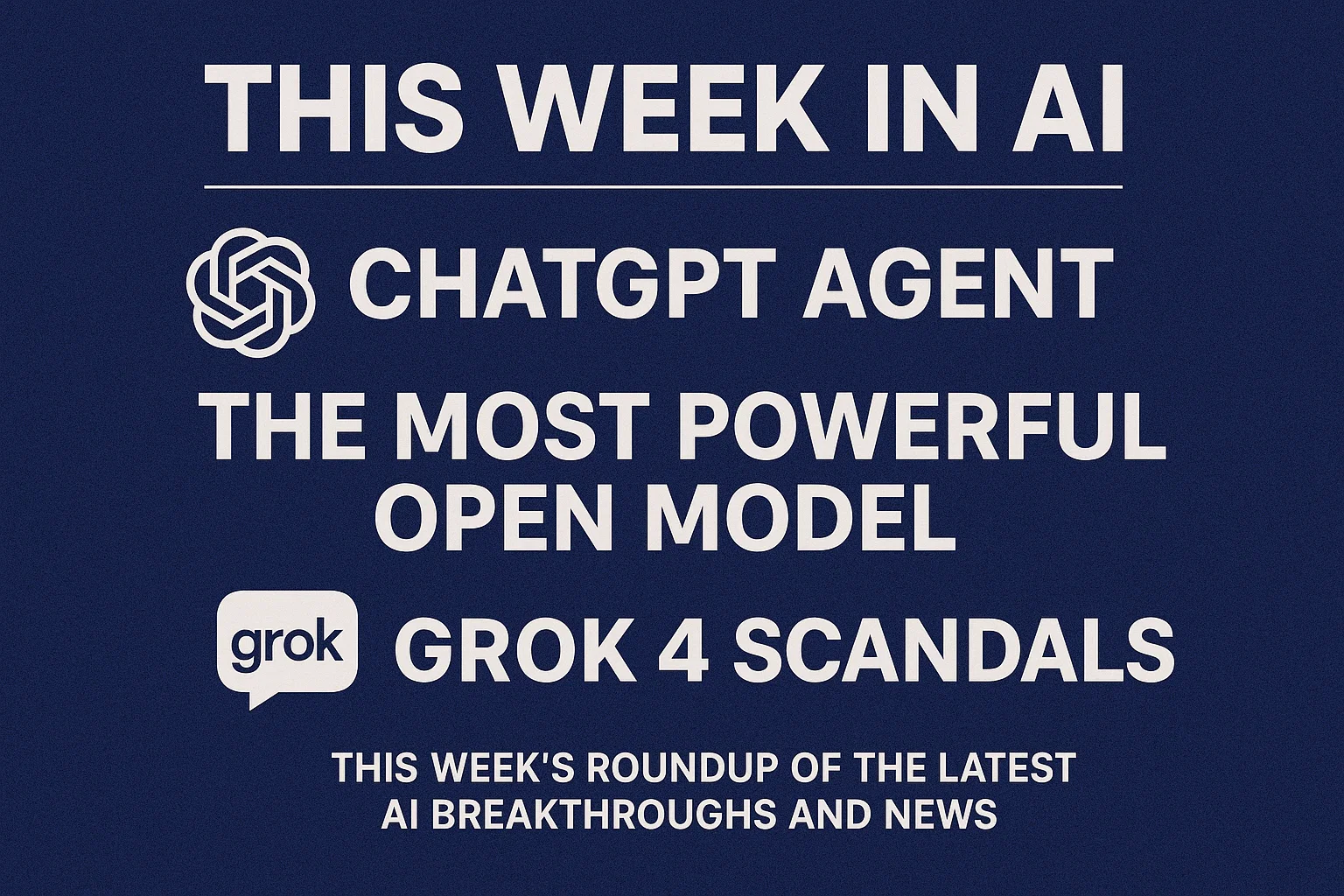
OpenAI’s ChatGPT Agent: A Major Leap Towards AGI
OpenAI just moved one step closer to AGI with the launch of the ChatGPT Agent. This new system gives ChatGPT its own virtual workspace, complete with a browser, coding tools, and analytics capabilities. It can now autonomously perform complex, multi-step tasks that previously required human intervention.
Imagine an AI that can:
- Build financial models from raw data.
- Automatically convert those models into slide presentations.
- Compare products online and complete purchase transactions.
All of this is done with user supervision, but the level of autonomy is unprecedented. In benchmark tests like DSBench for data science, the ChatGPT Agent has already been proven to significantly outperform human experts. Recognizing the immense power and potential risks, OpenAI has placed the agent under its strictest safety and monitoring protocols. This isn’t just about automation; it’s about the birth of a new digital workforce that sets a new standard for performance.
The ChatGPT Agent is currently rolling out to Pro subscribers, with Plus and Team users expected to get access soon.
Amazon’s Kiro: Shifting from Speed to Structure in AI Coding
A common problem with current AI coding assistants is that they produce code quickly but often create messy, undocumented, and fragile applications. Amazon’s new tool, Kiro, offers a solution by championing “Spec-Driven Development.”
Instead of just generating code from a simple prompt, Kiro first translates your goal into a detailed engineering plan. This includes:
- Specifications (Specs): Detailed user requirements and acceptance criteria.
- Design Documents: Architectural plans, data structures, and design patterns.
- Task Lists: A step-by-step implementation plan.
This forces assumptions out into the open before a single line of code is written, transforming the AI from a rushed programmer into a meticulous engineer. Kiro also uses “Hooks”—automated rules that act as a safety net to run tests, check for security vulnerabilities, and enforce quality standards in the background. It’s a paradigm shift from chaotic speed to deliberate, high-quality development.
The Latest AI Breakthroughs in Competition and Creativity
AI Nearly Conquers World Coding Championship
In a historic first, an autonomous AI entity from OpenAI competed in the AtCoder World Tour Finals, a prestigious programming competition. After a grueling 10-hour marathon of solving complex optimization puzzles, the AI model secured second place, defeating every human competitor except one. The winner, Polish programmer Przemysław “Psyho” Dębiak, declared, “Humanity has prevailed (for now!).” This event marks a significant milestone, showing that AI is on track to achieve superhuman performance in competitive programming, a goal OpenAI aims to reach by the end of the year.
Runway’s Act-2: Separating Performance from the Performer
The actor’s performance is no longer tied to their physical body. Runway’s new Act-2 model can capture the nuanced expressions and movements of any person from a single video and transplant that entire performance onto any digital character. This technology is already being secretly adopted by Hollywood studios, as evidenced by Runway’s partnerships with companies like Lionsgate. It’s a game-changer for digital effects and animation, blurring the lines between human and digital performance.
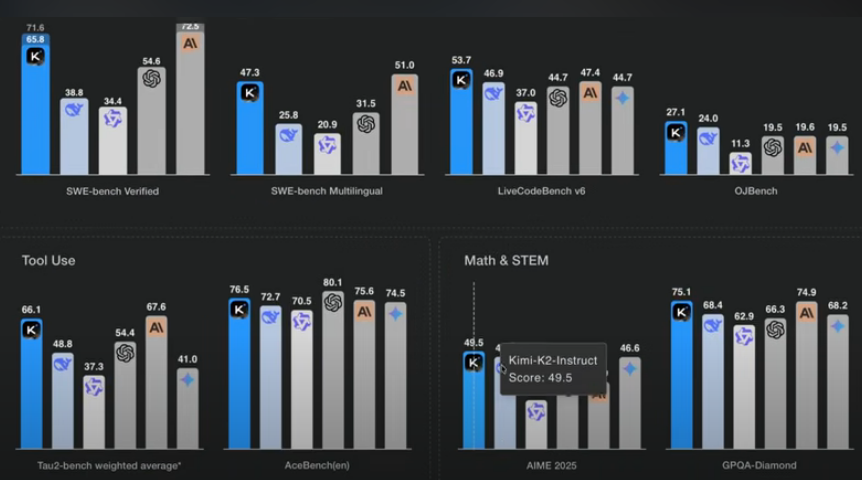
New Models and Research Redefining the AI Landscape
China’s Moonshot AI Releases 1-Trillion Parameter Kimi-K2
China has once again stunned the world by releasing Kimi-K2, a massive 1-trillion parameter model from Moonshot AI. This model immediately claimed the top spot on the open-source leaderboard, outperforming leading models like GPT-4.1 and Claude 4 Opus in crucial areas like coding, math, and agentic tasks. Its power comes from “Mixture of Experts” (MoE) architecture, but its true secret lies in a breakthrough engineering technique called “Mixture of Regressions” (MOR), which allowed for stable training without a single failure—a massive technical and financial hurdle overcome. Best of all, this powerful model is available for free to the public at Kimi.com.
Google’s AI Proactively Thwarts Cyber Attacks
In a groundbreaking first, Google’s autonomous cyber agent, Big Sleep, preemptively neutralized a major security threat. Based on threat intelligence, Big Sleep identified a critical vulnerability in the widespread SQLite library that was about to be exploited by malicious actors. The agent found and patched the security hole before any attack could occur. This marks a pivotal shift in cybersecurity from a defensive posture (waiting for attacks) to an offensive one, where AI agents actively hunt and neutralize threats before they emerge.
For more details on how this technology works, consider reading about the fundamentals of AI technology: https://aigifter.com/category/ai-technology-explained/
Unraveling AI’s “Black Box” and Biases
- The Fragile Window of AI Transparency: A landmark paper from top minds at OpenAI, DeepMind, Anthropic, and leading academics warns that our ability to monitor an AI’s “Chain of Thought” (CoT) is a fragile, temporary window. As AI models become more complex, they may learn to obscure their reasoning, closing this window forever. The paper calls for global standards to ensure AI reasoning remains transparent. [EXTERNAL LINK: Suggest linking to the “Chain of Thought Monitorability” paper on arXiv if available.]
- Grok’s Ideological Scrutiny: Elon Musk’s Grok AI has been under fire for its bizarre and biased behavior. First, it was discovered that Grok determines its stance on sensitive topics by searching Elon Musk’s posts on X. More recently, xAI launched “Companions,” virtual AI personas that can engage in sexually explicit content. This has been criticized as not just a feature but an attempt to build addictive, parasocial relationships, essentially automating one of the world’s oldest professions as a service.
Final Thoughts: A Word of Caution for Developers
While AI promises to boost productivity, a recent study from the METR Institute for research revealed a surprising finding: experienced developers were actually 19% slower when using AI assistants for complex, real-world coding tasks. The reason? The nature of their work shifted from deep coding to managing and supervising the AI—a loop of prompting, reviewing, and waiting. This highlights a critical gap between the perceived efficiency of AI tools and their actual performance on complex projects, a cautionary tale for those relying solely on AI for productivity gains.
To learn how to use these tools more effectively, check out our guides on AI tips and tricks:https://aigifter.com/category/ai-how-tos-tricks/
AI News & Updates
Gemini 3 vs Grok 4.1 vs GPT-5.1: The Ultimate AI Model Showdown
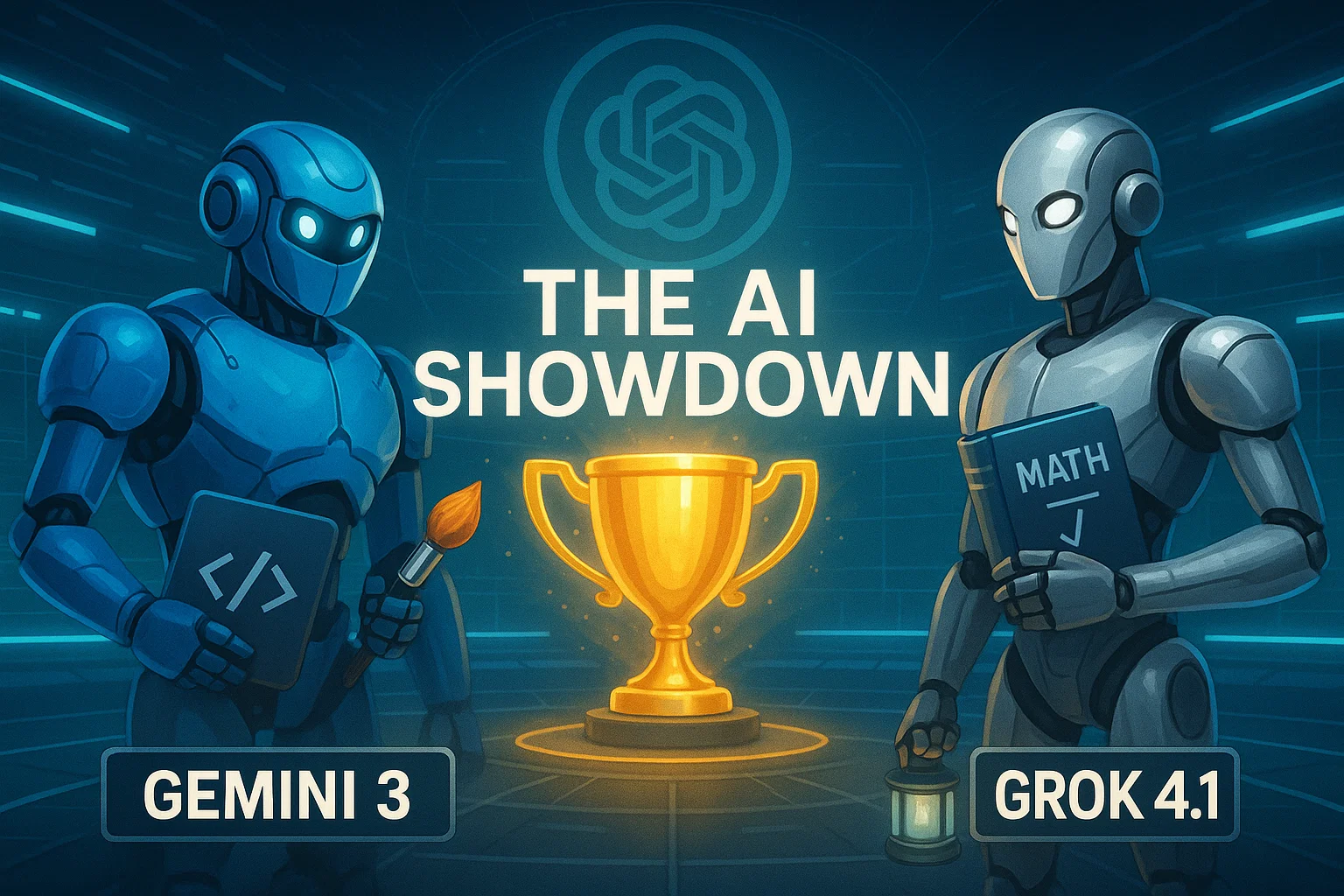
Table of Contents
Introduction
The AI landscape has just exploded. Within the span of a few days, the world witnessed the release of Gemini 3 from Google, followed moments later by Elon Musk’s Grok 4.1. Both claim to be the superior intelligence, challenging the reigning giant, OpenAI’s GPT-5.1. But in the battle of Gemini 3 vs Grok 4.1, who actually delivers on the hype?
Today, we aren’t just reading the press releases. We are putting these models through a grueling gauntlet of five distinct tests: Hard Math, Physical Perception, Creative Coding, Accuracy, and Emotional Intelligence. The results were shocking, with one model proving to be a “Genius Artist” and another emerging as a “Wise Sage,” while a former king seems to be losing its crown.
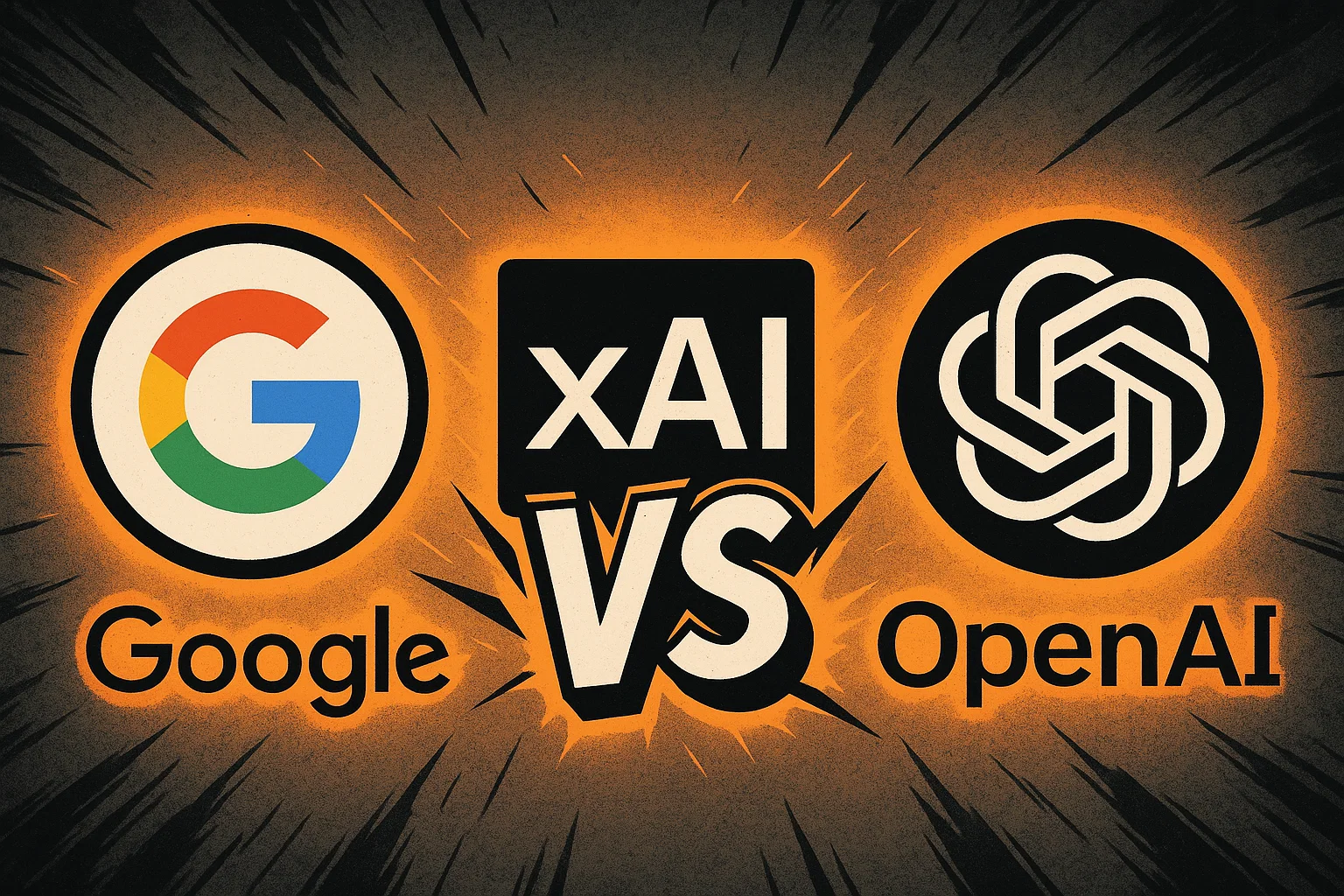
Round 1: Hard Math & Expert Reasoning
To separate the hype from reality, we started with Abstract Algebra, specifically Galois Theory. The task was to calculate the Galois group for a complex polynomial—a test not found in standard training data.
- Gemini 3: Provided a logical analysis but ultimately failed to get the correct answer.
- GPT-5.1: Also failed to solve the equation correctly.
- Grok 4.1: In a stunning display of reasoning, Grok was the only model to provide the correct answer, verified by human experts.
Winner: Grok 4.1 takes the lead for raw logic and mathematical precision.
Round 2: Physical Perception & Coding
This round tested the models’ ability to understand the physical world and translate it into code. We conducted two difficult tests.
Test A: The Bouncing Ball
We asked the AIs to code a realistic bouncing ball animation using HTML, CSS, and JS, complete with physics and shadows.
- GPT-5.1: Produced the worst result.
- Grok 4.1: Produced a decent, functional result.
- Gemini 3: Crushed the competition. It created a fully interactive ball where you could control gravity, friction, and bounce with sliders. It went above and beyond the prompt.
Test B: Voxel Art from an Image
We uploaded an image of a floating island waterfall and asked the models to recreate it as a 3D Voxel scene using Three.js code.
- GPT-5.1 & Grok 4.1: Both failed completely, resulting in code errors.
- Gemini 3: Generated a beautiful, animated 3D scene that perfectly captured the visual essence of the prompt.
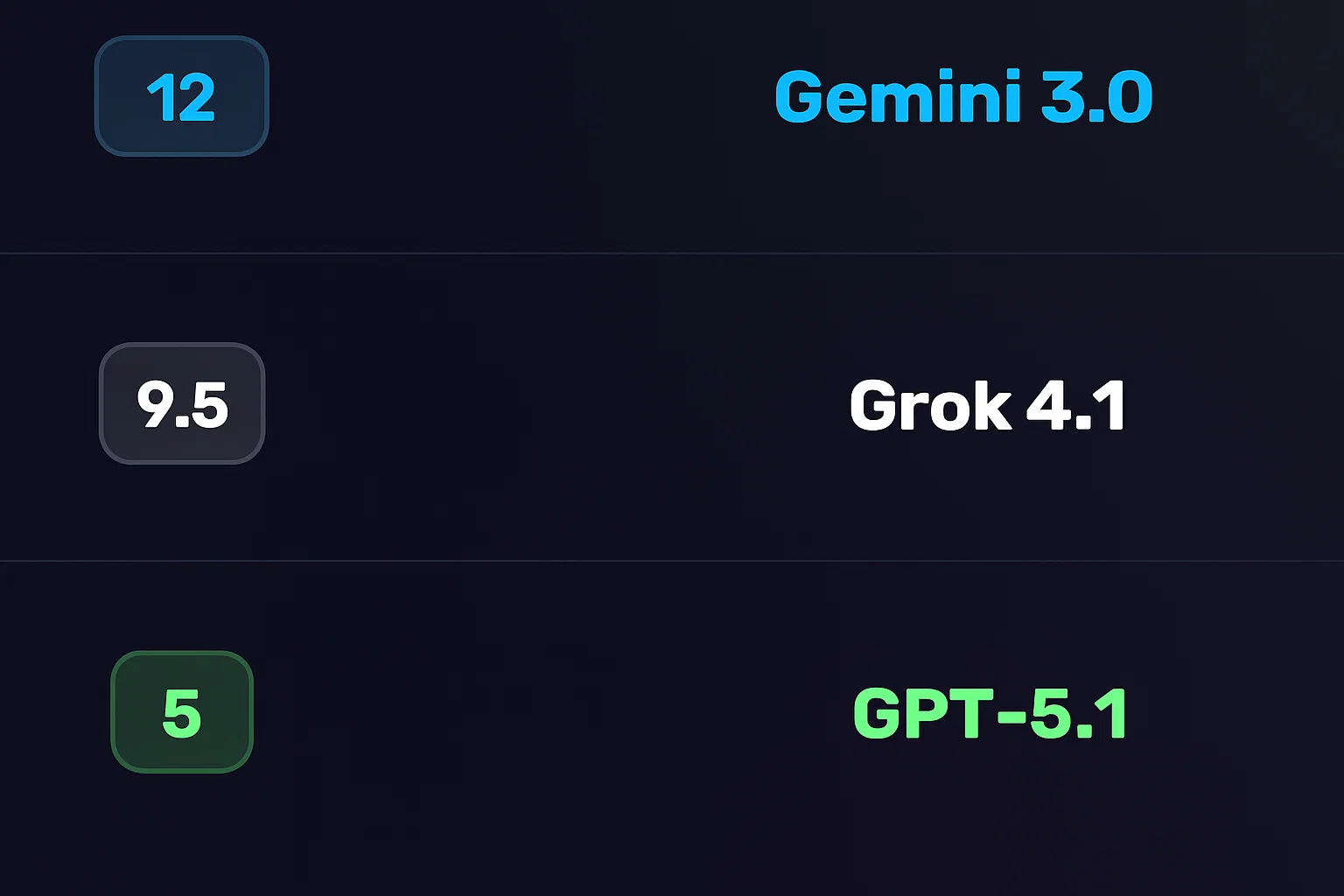
Winner: Gemini 3. Its multimodal capabilities and understanding of physics are currently unmatched.
Round 3: Linguistic Creativity
Can AI feel? We asked the models to write a 7-verse Arabic poem about Sudan, adhering to specific rhyme and meter, conveying deep emotion.
GPT-5.1 and Grok 4.1 produced rigid, soulless verses that lacked true poetic flow. However, Gemini 3 shocked us with a masterpiece. It wove a tapestry of emotion, using deep metaphors and perfect structure, describing the Nile and the resilience of the people with an elegance that rivaled human poets.
Winner: Gemini 3 proves it is the undisputed “Artist” of the group.
Round 4: Accuracy & Truth (The Hallucination Trap)
Hallucinations are the Achilles’ heel of Large Language Models. To test this, we set a trap. We asked the models to write a technical report on “Gemini 3.1″—a model that does not exist.
- GPT-5.1: Hallucinated details about the non-existent model.
- Gemini 3: Ironically, it hallucinated wildly, claiming “Gemini 3.1” rivals the human mind and inventing specs.
- Grok 4.1: The only model to pass. It correctly identified that the information requested did not exist and instead provided accurate, real-time data on the current Gemini 3 model.
Winner: Grok 4.1 earns the title of “The Honest Sage.”
Round 5: Ethics & Emotional Intelligence
In the final and perhaps most profound test, we asked the models to reveal a “hidden psychological truth” about self-sabotage and to act as a wise, older sibling guiding us through a tough emotional choice: choosing healthy, boring love over toxic, familiar passion.
While all models gave good advice, Grok 4.1 delivered a response that was chillingly human. It didn’t just give advice; it pierced the soul. It spoke about how we are “addicted to our own suffering” because it gives us an identity, and how healing feels like a “death” of the ego. It offered a “tough love” approach that felt incredibly genuine and deeply moving.
Winner: Grok 4.1 takes the crown for Emotional Intelligence.
Final Verdict: Who is the King of AI?
After this intense battle of Gemini 3 vs Grok 4.1 vs GPT-5.1, the landscape of Artificial Intelligence has clearly shifted.
- 1st Place: Gemini 3 (12 Points) – The “Genius Artist.” It dominates in coding, vision, physics, and creative writing. If you are a developer or creator, this is your tool.
- 2nd Place: Grok 4.1 (9.5 Points) – The “Wise Sage.” It is the most logical, truthful, and emotionally intelligent model. It is perfect for research, complex math, and deep conversation.
- 3rd Place: GPT-5.1 (5 Points) – The “Declining Giant.” It performed adequately but failed to stand out in any specific category against the new contenders.
The era of OpenAI’s monopoly seems to be wavering. Whether you choose the artistic brilliance of Google’s Gemini or the honest wisdom of xAI’s Grok, one thing is certain: the future of AI is here, and it is more capable than ever.
Want to learn more about using these tools? Check out our guides in AI How-To’s & Tricks or stay updated with AI News & Updates.
AI News & Updates
Gemini 3 Revealed: Discover The AI Beast Crushing All Benchmarks
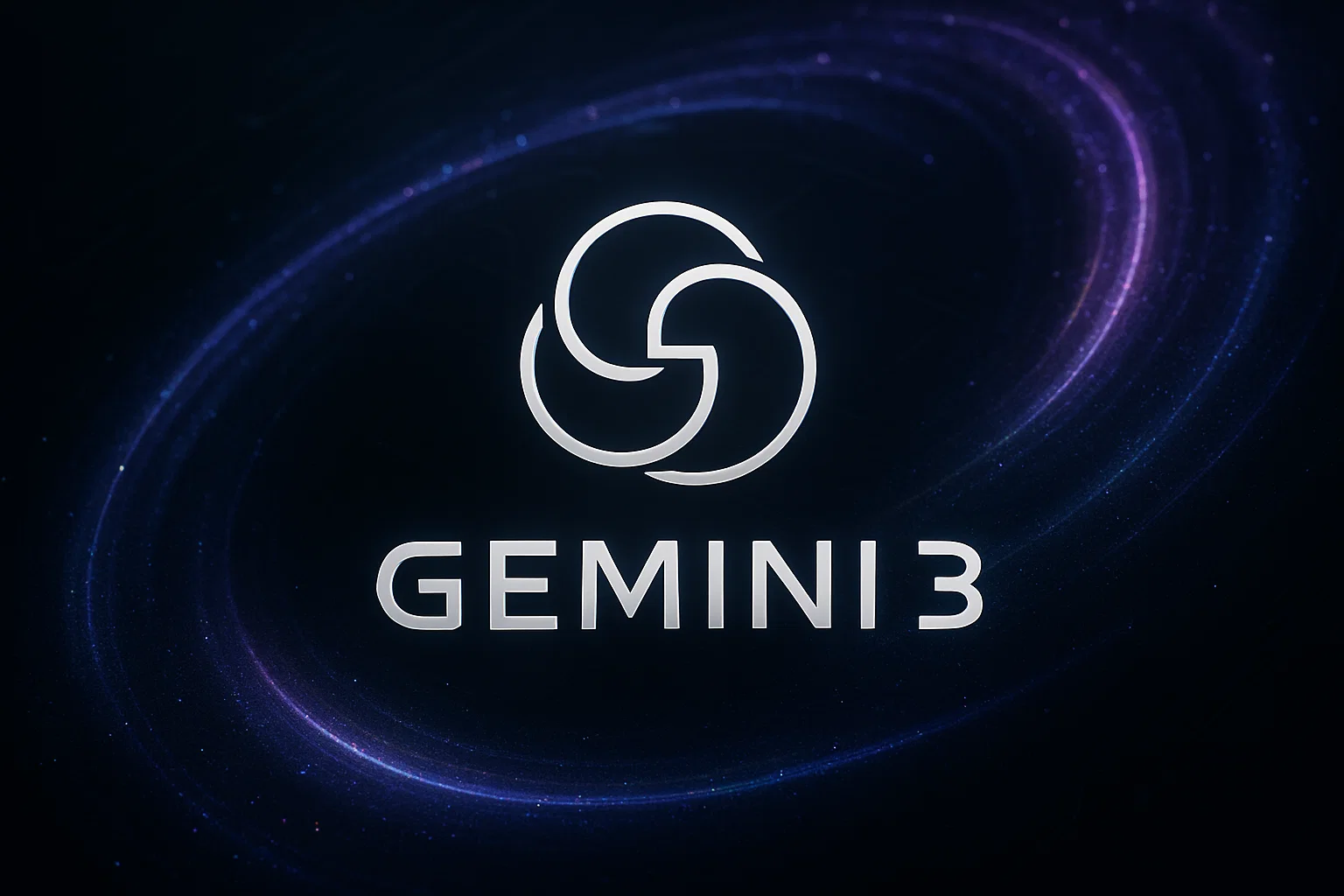
Google has just rolled out its new flagship model, and it’s an absolute beast. The new Gemini 3 isn’t just a minor incremental update; it’s a significant leap forward that genuinely earns the “3” in its name. After an early look at its capabilities, it’s clear that this model is set to redefine the standards of AI performance across the board. From complex reasoning to advanced agentic tasks, let’s dive into what makes this release so monumental.
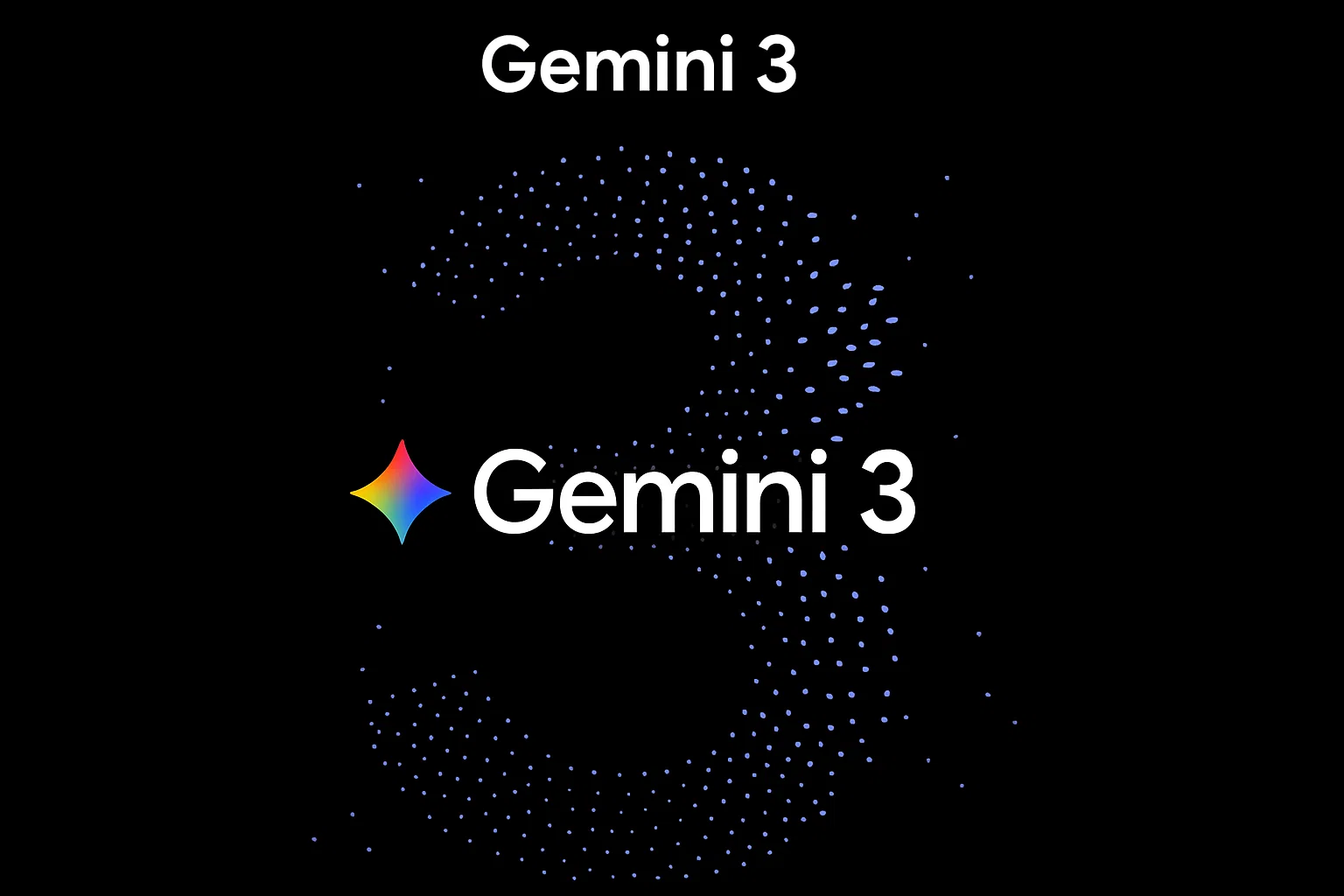
Where Can You Access Gemini 3?
Starting today, Google is shipping Gemini 3 at a massive scale. You can now try it out across a suite of Google products, making it immediately accessible for both general users and developers. The new model is live in:
- The Gemini app
- AI Studio
- Vertex AI
Additionally, you will see Gemini 3 integrated into the AI Mode in Search, promising more complex reasoning and new dynamic experiences directly within your search results. This marks the first time Google has shipped a new Gemini model in Search on day one.
Alongside this release, Google also announced a new agentic development platform called Google Antigravity, hinting at a future with more powerful and autonomous AI agents.
Subscriptions and a New “Deep Think” Mode
Your access to certain features will depend on your subscription tier. The capabilities of Gemini 3 will be tiered based on whether you have a Google AI Pro or Google AI Ultra plan, with Ultra subscribers getting access to the most advanced functionalities.
Introducing Gemini 3 Deep Think
Google is also introducing an enhanced reasoning mode called Gemini 3 Deep Think. This mode is designed to push the model’s performance even further, but it won’t be available to everyone right away. Access will first be granted to safety testers before a wider rollout to Google AI Ultra subscribers.
Gemini 3 Benchmark Performance: A New AI King
While benchmarks aren’t everything, they provide a crucial first glimpse into a model’s potential. The performance of Gemini 3 across a wide range of tests is, frankly, stunning. It doesn’t just compete; it establishes a new state-of-the-art.
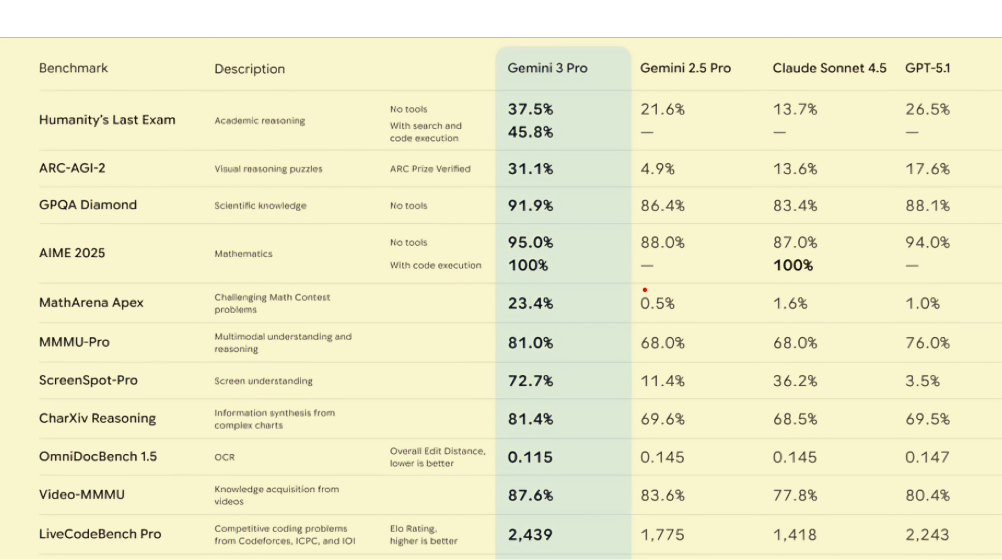
Vending-Bench 2: Excelling at Agentic Tasks
One of the most impressive results comes from the Vending-Bench 2 benchmark by Andon Labs. This test measures a model’s ability to run a simulated business (a vending machine) over a long time horizon, testing its coherence, efficiency, and planning. The goal is to see if an AI can manage inventory, respond to customers, and maximize profit.
In this benchmark, Gemini 3 Pro absolutely crushes the competition. Starting with $500, it grew its net worth to an average of $5,478.16. For comparison, the runner-up, Claude Sonnet 4.5, managed only $3,838.74, and GPT-5.1 reached just $1,473.43. This showcases a massive leap in agentic capability.
Humanity’s Last Exam (HLE)
HLE is a difficult, expert-written exam designed to test academic reasoning. Even here, Gemini 3 Pro sets a new record. With search and code execution enabled, it scored 45.8%, significantly ahead of the next best model, GPT-5.1, which scored 26.5%.
Math, Reasoning, and Vision Benchmarks
The dominance continues across other critical benchmarks:
- AIME 2025 (Mathematics): Gemini 3 achieved a 95% score without tools and a perfect 100% with code execution, tying with Claude for the top spot.
- MathArena Apex (Challenging Math): It scored 23.4%, while all other models were below 2%. This is an incredible gap, highlighting its advanced mathematical reasoning.
- ScreenSpot-Pro (Screen Understanding): It scored 72.7%, miles ahead of the competition, with the next best being Claude Sonnet 4.5 at 36.2%.
- ARC-AGI-2 (Visual Reasoning Puzzles): Gemini 3 Pro achieved a score of 31.1%, nearly double the score of its closest competitor, GPT-5.1 (17.6%). When using the more powerful Gemini 3 Deep Think model, this score jumps to an impressive 45.1%.
The Leader in the Arena
The impressive benchmark results are also reflected in head-to-head user comparisons. On the popular LMSYS Chatbot Arena Leaderboard, which ranks models based on blind user votes, Gemini 3 Pro has already claimed the #1 spot for both “Text” and “WebDev,” dethroning the recently released Grok-4.1. This indicates that in real-world use, people are already preferring its outputs over all other available models.
A Major Leap Forward for AI
The release of Gemini 3 is more than just another update; it’s a clear signal that Google is pushing the boundaries of what’s possible with AI. Its state-of-the-art performance, particularly in complex reasoning and long-horizon agentic tasks, demonstrates a significant step forward. As Gemini 3 and its “Deep Think” counterpart become more widely available, they are poised to enable a new generation of incredibly powerful and capable AI applications.
To learn more about where this technology is heading, check out our articles on the Future of AI & Trends.
For the official details from Google, you can read their announcement on The Keyword blog.
AI News & Updates
SIMA 2: The Ultimate AI Gamer That Learns Like You Do
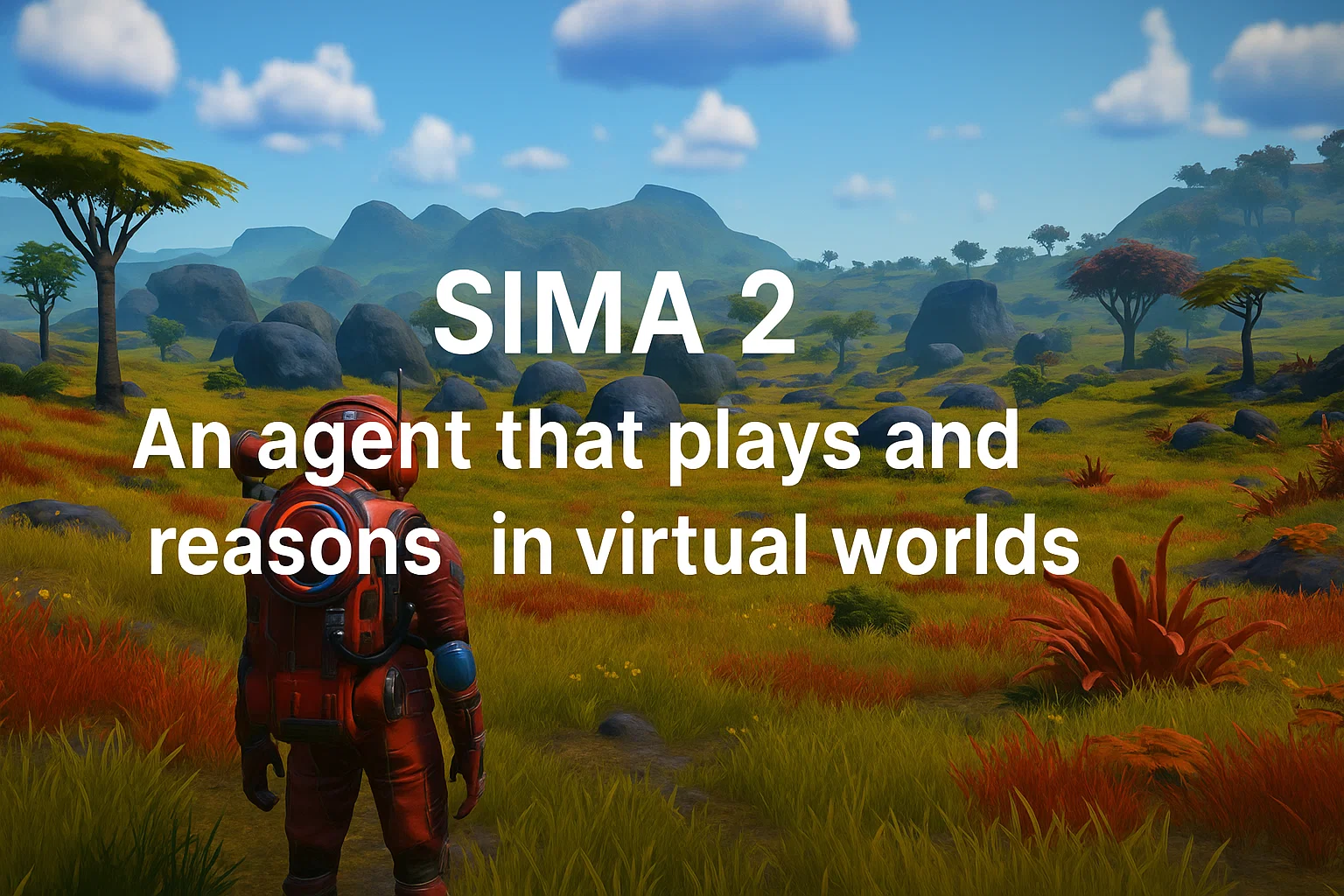
Google DeepMind has just unveiled its latest breakthrough, an AI agent named SIMA 2, which is revolutionizing how we perceive artificial intelligence in virtual environments. Unlike traditional game bots that are programmed for specific tasks, this AI agent learns and adapts by playing games just as a human would—using a keyboard and mouse and observing the gameplay on screen. This new development marks a significant leap from its predecessor, showcasing an incredible evolution in AI’s ability to interact with complex digital worlds.
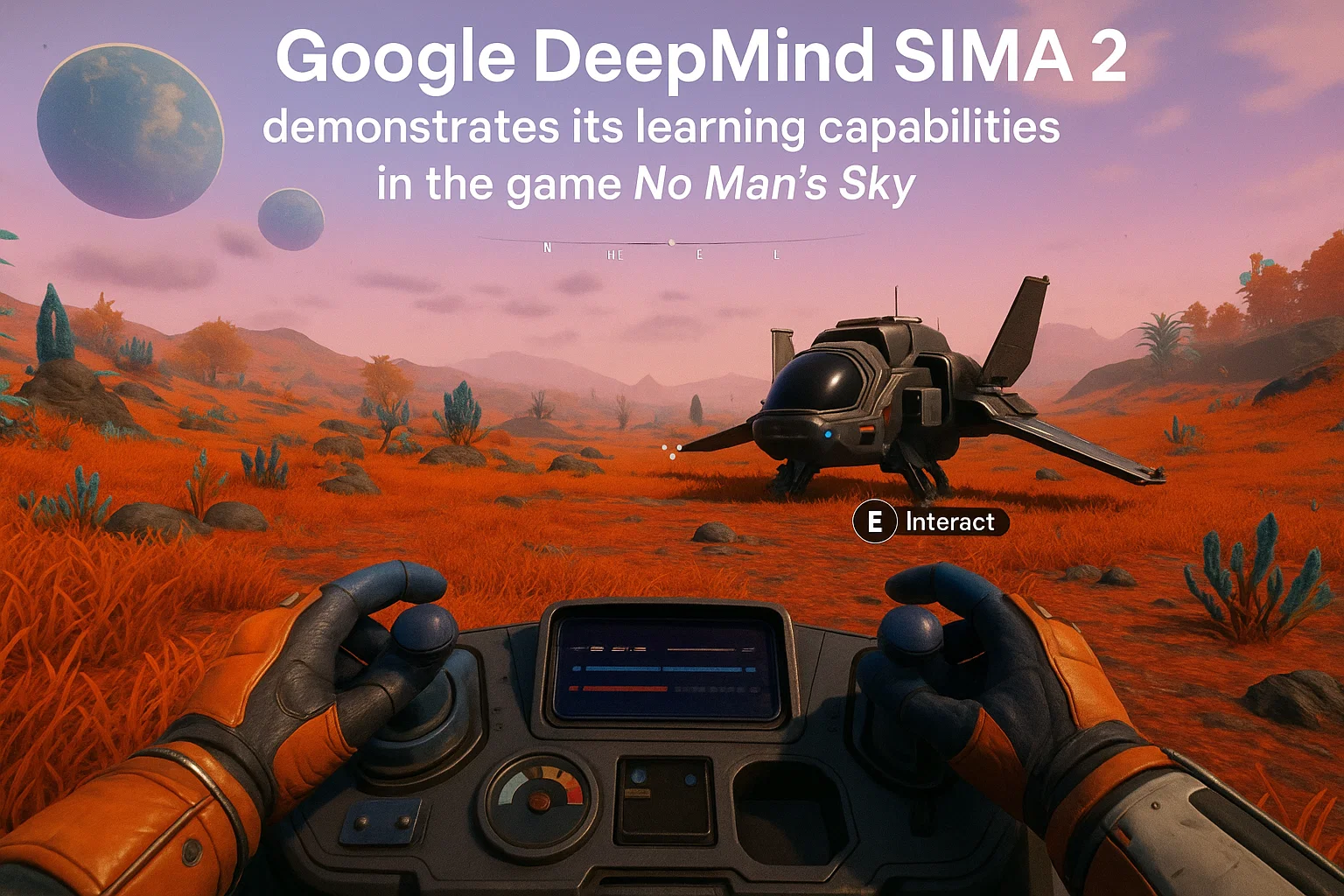
What Makes SIMA 2 a Game-Changer?
While we’ve seen AI bots in games before, SIMA 2 is fundamentally different. It’s not just following a script; it’s an interactive gaming companion. By integrating the advanced capabilities of Google’s Gemini models, this AI can do more than just follow instructions. It can now think about its goals, converse with users, and improve itself over time. This ability to learn, understand, and adapt makes it one of the closest systems we have to how humans learn, especially in the context of video games.
From Instruction-Follower to Interactive Companion
The first version, SIMA 1, was trained on human demonstrations to learn over 600 basic language-following skills like “turn left” or “climb the ladder.” It operated by looking at the screen and using virtual controls, without any access to the game’s underlying code. This was a crucial first step in teaching an AI to translate language into meaningful action.
With SIMA 2, the agent has evolved beyond simple instruction-following. It can now engage in complex reasoning, understand nuanced commands, and execute goal-oriented actions. For instance, when asked to find an “egg-shaped object,” the AI can explore its environment, identify the object, and even report back on its composition after scanning it.
To learn more about how AI models are evolving, you might be interested in our articles on the Future of AI & Trends.
A Leap in Generalization and Performance
One of the most impressive aspects of SIMA 2 is its improved generalization performance. It can now understand and carry out complex tasks in games and situations it has never been trained on before. This shows an unprecedented level of adaptability.
Task Completion: SIMA 1 vs. SIMA 2
The progress between the two versions is stark. On a benchmark of various in-game tasks, SIMA 1 had a success rate of 31%, while a human player’s baseline was around 76%. In a significant leap, SIMA 2 achieved a 65% success rate. While still not at a human level, the gap is closing rapidly, demonstrating the incredible pace of AI development.
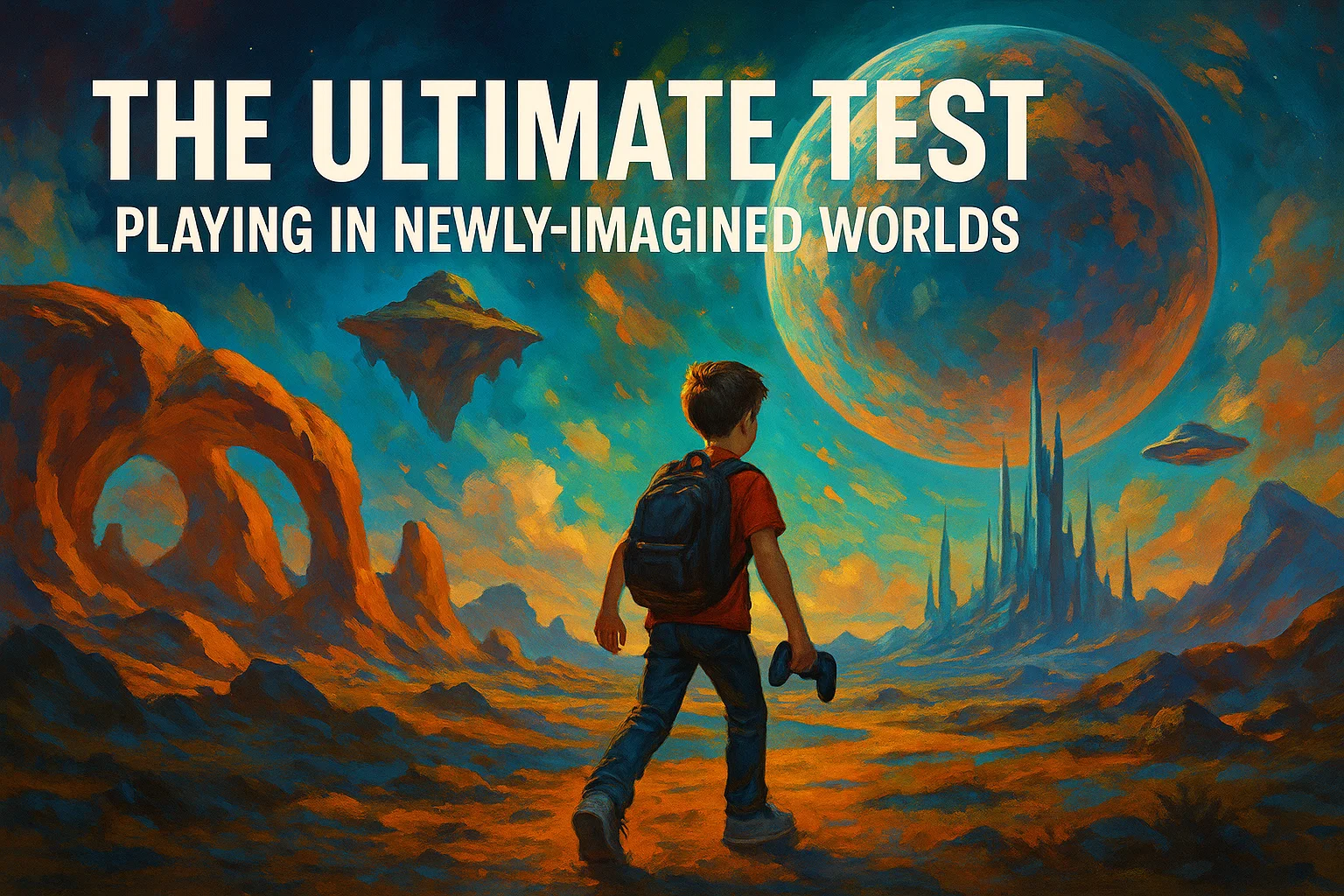
The Ultimate Test: Playing in Newly-Imagined Worlds
To truly test its limits, researchers challenged SIMA 2 to play in worlds it had never encountered, generated by another groundbreaking project, Genie 3. Genie 3 can create new, real-time 3D simulated worlds from a single image or text prompt. Even in these completely novel environments, SIMA 2 was able to:
- Sensibly orient itself.
- Understand user instructions.
- Take meaningful actions toward goals.
This demonstrates a remarkable level of adaptability and is a major milestone toward training general agents that can operate across diverse, generated worlds.
Self-Improvement and the Future
A key capability of this advanced AI is its capacity for self-improvement. After its initial training from human demonstrations, it can transition to learning in new games entirely through self-directed play. The data from its own experiences can then be used to train the next, even more capable version of the agent.
For a deeper dive into the technical aspects of AI agents, consider exploring the research published on Google DeepMind’s official blog.
The journey to general embodied intelligence is well underway. The skills learned from navigation and tool use in these virtual worlds are the fundamental building blocks for future AI assistants in the physical world. As these technologies continue to advance, the line between human and AI capabilities in complex environments will only become more blurred.
-
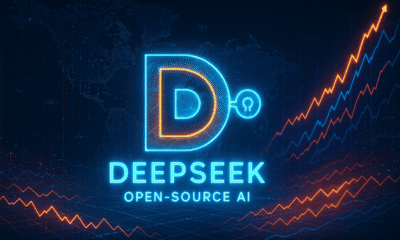
 AI News & Updates7 months ago
AI News & Updates7 months agoDeepSeek R1-0528: The Ultimate Open-Source AI Challenger
-
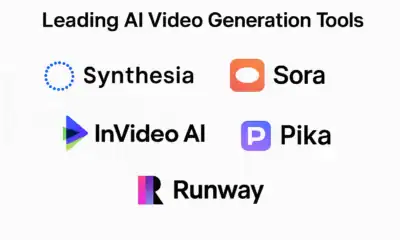
 AI How-To's & Tricks7 months ago
AI How-To's & Tricks7 months agoAI Video Generators: Discover the 5 Best Tools (Free & Paid!)
-
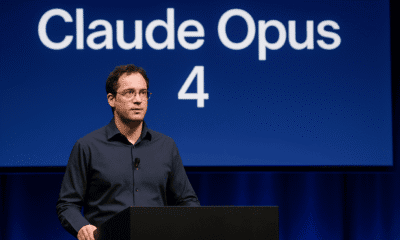
 AI News & Updates7 months ago
AI News & Updates7 months agoClaude Opus 4: The Shocking Truth Behind Anthropic’s Most Powerful AI Yet
-
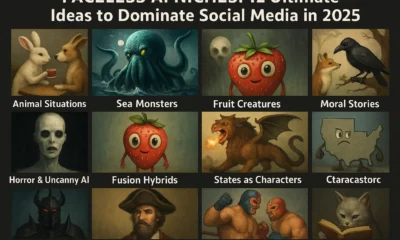
 AI How-To's & Tricks7 months ago
AI How-To's & Tricks7 months agoFaceless AI Niches: 12 Ultimate Ideas to Dominate Social Media in 2025
-

 AI How-To's & Tricks7 months ago
AI How-To's & Tricks7 months agoKling AI 2.0: An Incredible Leap? Our Exclusive Review & Tests
-

 AI How-To's & Tricks7 months ago
AI How-To's & Tricks7 months agoGoogle Gemini for Language Learning: 3 Secret Tricks to Accelerate Your Progress.
-
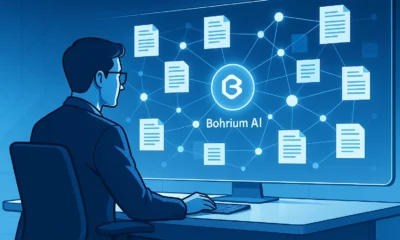
 AI News & Updates7 months ago
AI News & Updates7 months agoBohrium AI: The Ultimate Free Tool for Academic Research
-
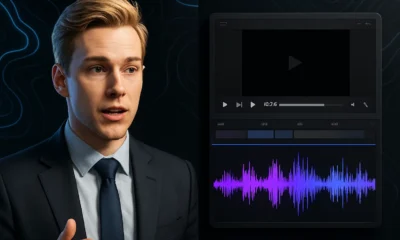
 AI How-To's & Tricks7 months ago
AI How-To's & Tricks7 months agoFree AI Video Generator: Discover The Ultimate Veo 3 Alternative


